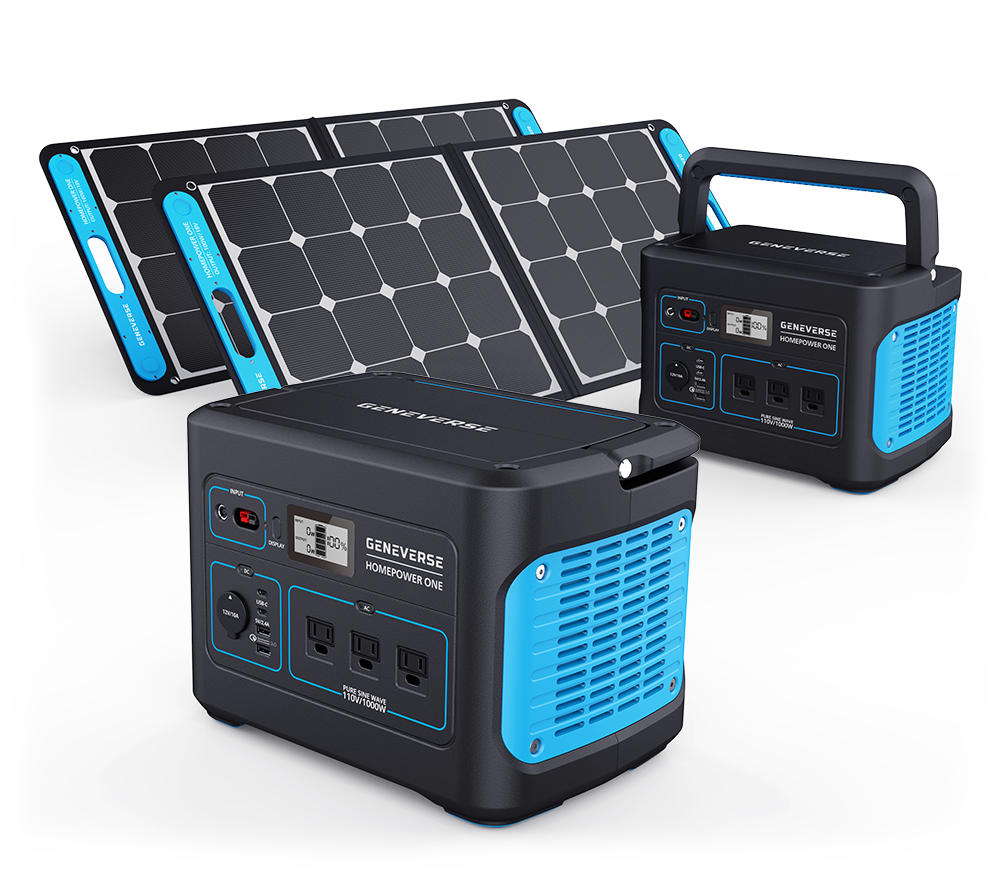The Western Mountain region of the United States composes Montana, Idaho, Wyoming, Utah, Colorado, Arizona, New Mexico, and Nevada. According to the Red Cross, residents of the Pacific West Coast are most susceptible to earthquakes, wildfires, hurricanes, and landslides.
As is the case with all weather emergencies, you’ll want to begin gathering supplies to create an emergency preparedness kit. Keep essentials on hand year round like water, non-perishable foods, and a first-aid kit. If you are in a drought-prone region, stock up on extra water when possible. Weather emergencies also always come with the risk of a power outage. Think about the last time you lost power, and decide if your household could benefit from a backup battery power source. The HomePower ONE is compatible with a wide range of household appliances, like the refrigerator and lighting, and can charge your electronic devices to keep you in communication with family and the community.

Here are some more tips to help you prepare for each type of weather event that can hit your area.
1. Earthquakes
Assess the structural soundness of your home and consider making improvements sooner rather than later. Similarly, identify any objects inside your home that could become a hazard, like heavy bookshelves or glass objects, and secure them. Next, evaluate which room of your house would be safest to shelter in, or the safest part of each room of your home. The safest area of your home would be away from glass, hanging objects, heavy cabinets, and other large furniture. A room without ceiling light fixtures like chandeliers and exposed shelving is also safest. Contrary to popular belief, do not stand in doorways. If driving, pull over and set your emergency parking brake.
2. Wildfire
Consider using fire-resistant materials wherever possible in your home. Be sure to have an outdoor water source with a hose that can reach any area of your property, in the case you need to prevent or put out flames. Within at least 30 feet of your home, remove any debris or combustible materials like dead branches or fallen leaves. Make sure your roof and gutters are clean and branches are not hanging over the roof or chimney. Since wildfires are so unpredictable, learn and practice all your evacuation zones.

3. Hurricanes
Hurricane season begins on May 15 in the Eastern Pacific and June 1 in the Central Pacific, ending on November 30. Begin your preparation by assessing the risk a hurricane poses to your home and community. Evaluate what on your property could cause damage and remove risks like dead trees and be sure to have plenty of room inside to store lightweight yard furniture that could blow around in the wind. Learn the best routes of evacuation and practice them now, so you’ll be confident when the time comes to actually need to drive them.

4. Landslides
A landslide is most deadly when it occurs quickly without any notice. Each year, landslides are responsible for 25-50 deaths and billions of dollars in damage.To avoid being caught off guard, sign up for local emergency notifications that will alert you of unusual weather conditions or provide evacuation and shelter warnings. It is important to take action immediately following an evacuation notice, as every minute allows the landslide time to become faster and more dangerous.
Consult a geotechnical professional if you’re worried your home or business may be in a path of or improperly prepared for a landslide or mudslide.Since you cannot change the path once a debris flow has started, you may be able to protect your property from mud or floodwaters with sandbags, retaining walls, or k-rails.
Summary
Educating yourself on how to react to weather emergencies can prevent you from feeling overwhelmed when an emergency strikes. Begin preparing an emergency supply kit, identify potential hazards in or around your home, and learn evacuation routes and places of shelter. Practice all safety plans with your whole household so you’re all prepared, no matter when you’re affected. Since power outages are common with these types of weather events, consider purchasing an emergency generator like the HomePower ONE or SolarPower ONE.

About Geneverse: Geneverse (formerly Generark) is the most reliablesolar generator and source of emergency backup power for your home and community. From theHomePower backup battery power station providing portable access to electricity, to theSolarPowersolar panels as a source for recharging, never be disconnected from what matters most to you. Learn more about how Geneverse and its industry-leading 5-year limited warranty can bring protection and security to your family ongeneverse.com. Never face a power outage alone, and power your home with a solar generator from Geneverse.




Leave a comment (all fields required)